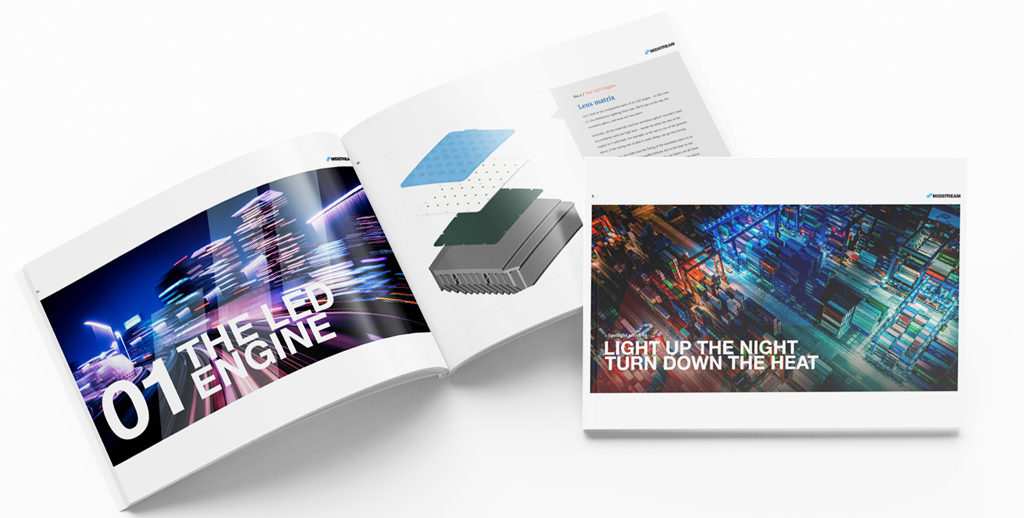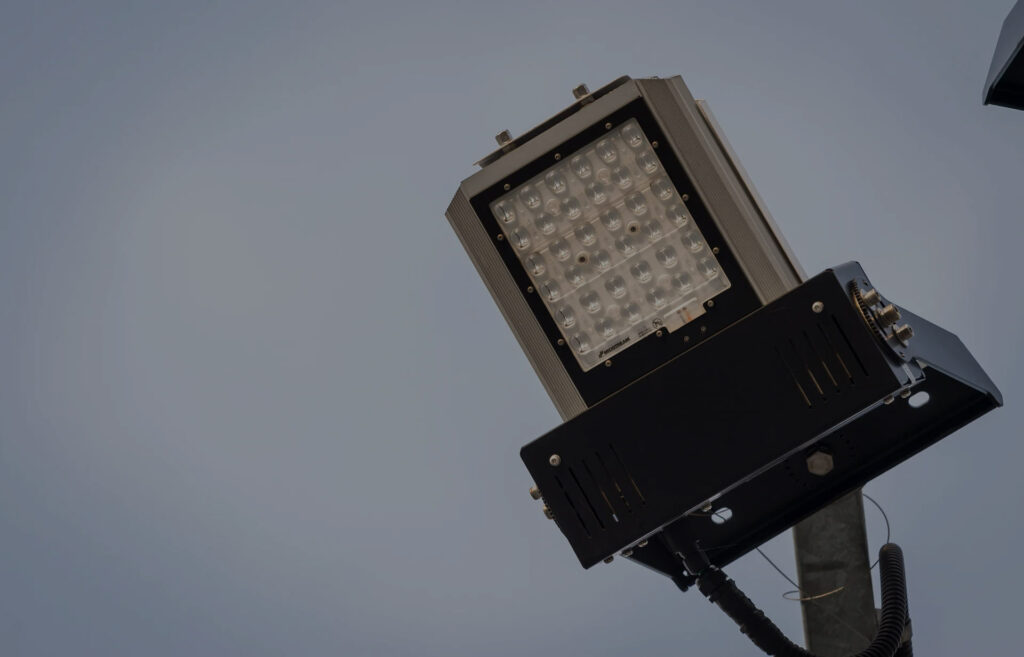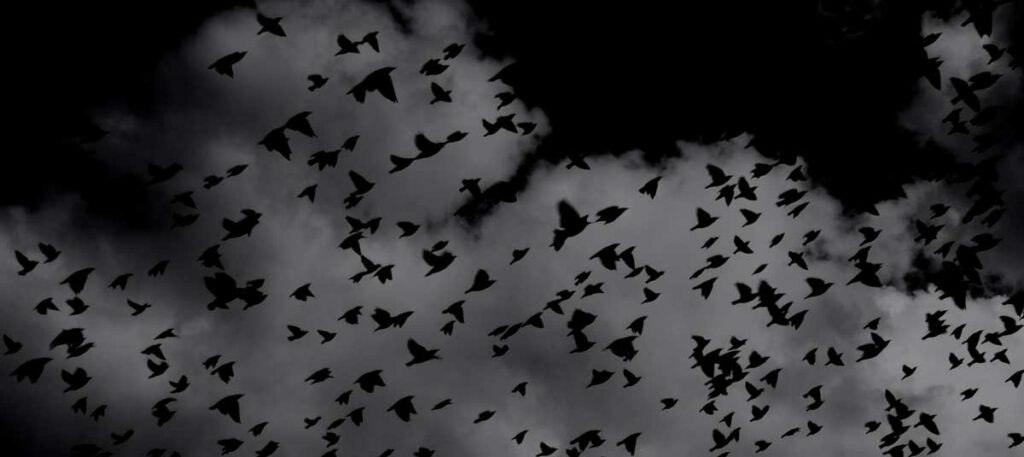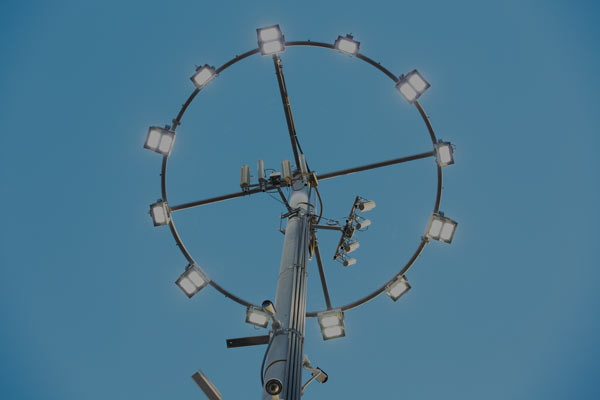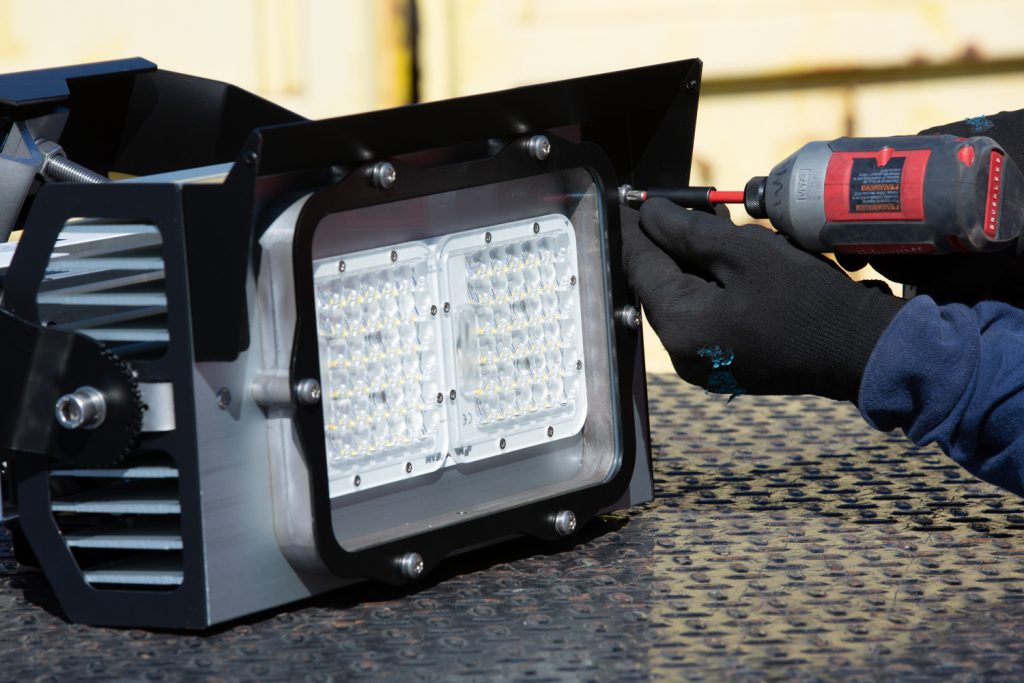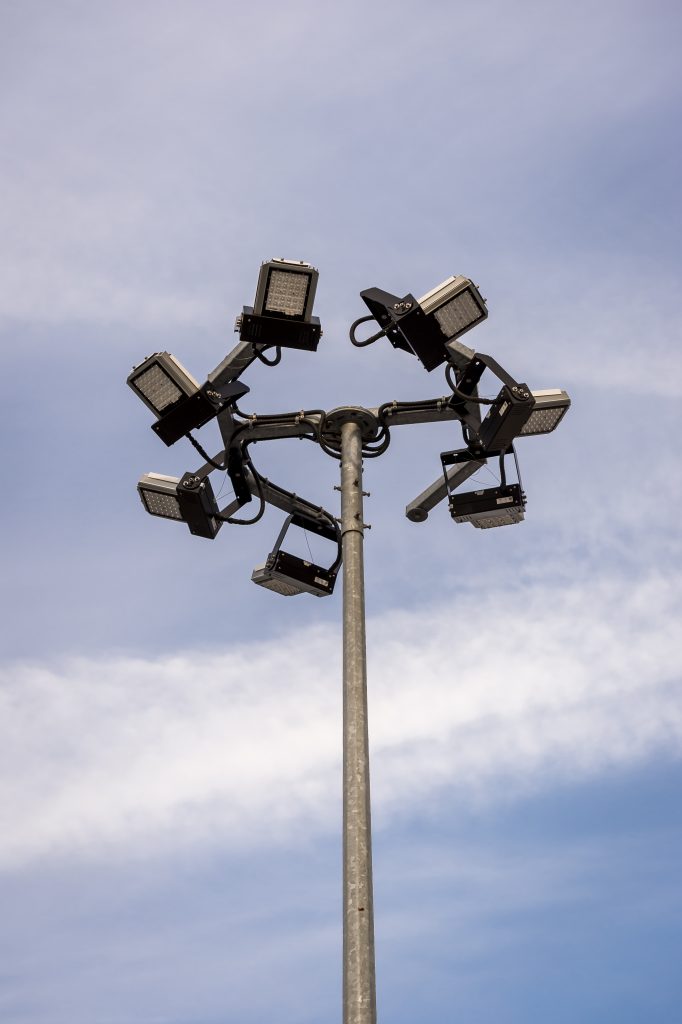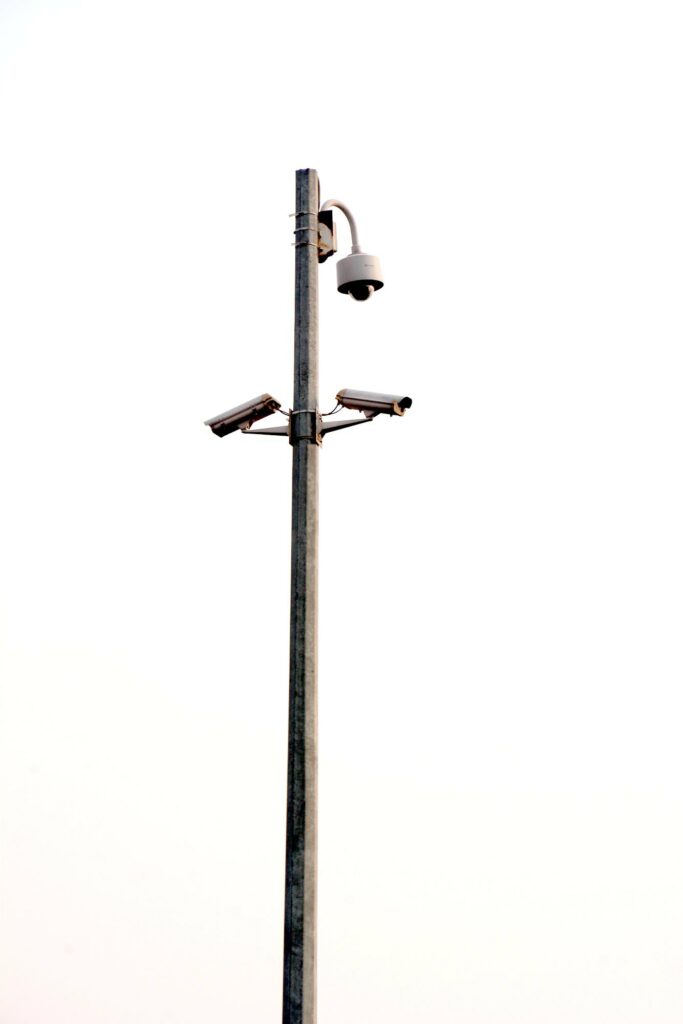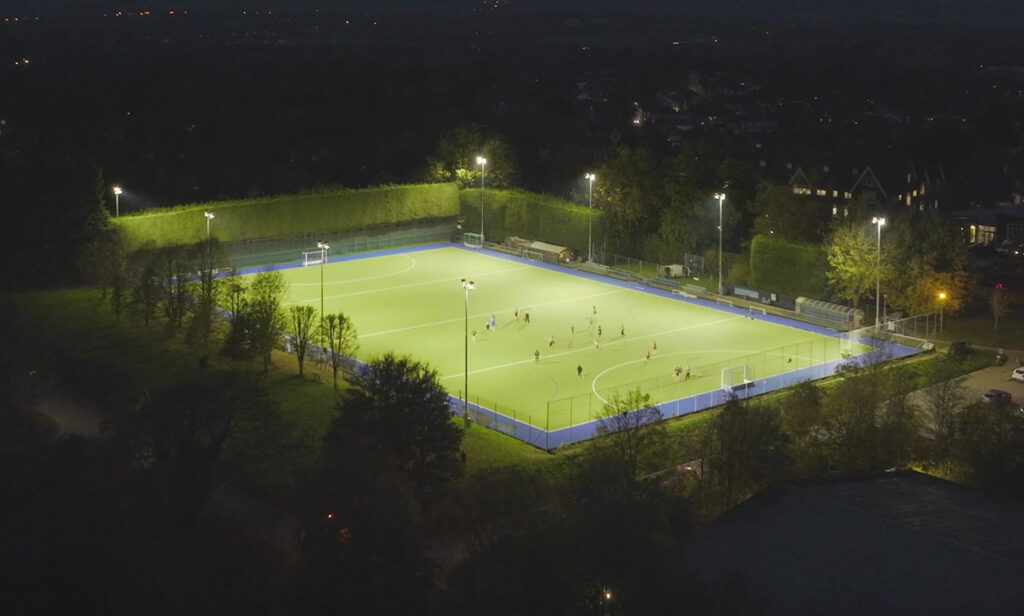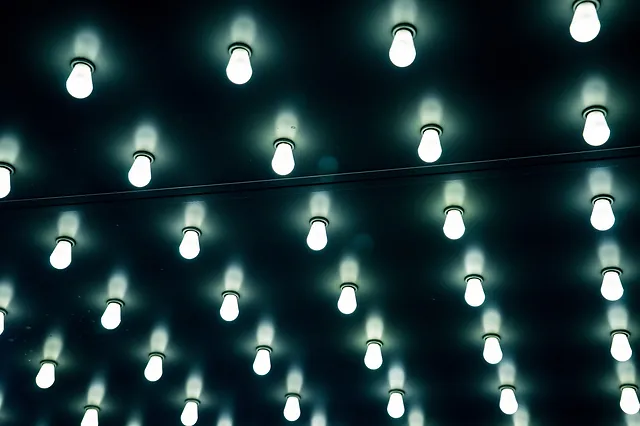Category: Military
To find out more about high—power LED lighting and high heat environments and to help you understand the issues you could face and how to avoid them you can download Midstream’s white paper for FREE here
So what is it?
One example of light pollution is skyglow. This type of light pollution comes about because things like street and building lights aren’t aimed just where they’re needed. Instead, a large proportion of their output goes directly, or is reflected, upwards and is scattered by the atmosphere – this virtually obscures anything above it such as the Milky Way and stars.
How we work to avoid skyglow:
- All our lighting designs and installations seek to minimise this type of light pollution as much as possible. They never direct light straight to the sky – it would be a total ‘waste’ and compromise what we’re trying to achieve. So, all our products have shields that prevent this.
- Our luminaires, with their proprietary lenses, are also designed to produce an even light, just where it’s needed, rather than an intense light in one area that would cause greater reflection up to the sky and add to skyglow.
As well as skyglow there are three other main types of recognised light pollution. These are:
- Glare – excessive brightness that causes visual discomfort.
- Light spill – light falling where it’s not intended, needed or wanted.
- Clutter – bright, confusing, and excessive groupings of light sources.
You’ve probably experienced these on a personal level. The dazzle of an oncoming car’s headlights – glare. A neighbour’s garden security lighting shining in your home – spill. If you’re standing in somewhere like the middle of Times Square or Piccadilly Circus– clutter.
They can all happen with industrial lighting too. So in the rest of this short blog, we’ll focus on just these aspects, and what we as an environmentally aware, specialist lighting company do to combat them,
Industrial lighting glare:
Just the same as a car’s headlight glare can cause safety issues, industrial glare can too. Poorly configured aviation apron lighting produces significant safety problems for staff and passengers on the ground, and pilots in their planes. It’s the same for ports and maritime terminal lighting. If high mast crane lighting isn’t properly aimed, with the right shielding also in place, those working on the ground and the crane operators themselves can be affected by harsh glare and safety can be compromised. Glare can also be a problem with sports lighting – for the players, spectators, and broadcasters.
Our lighting Design and Engineering teams have years of experience in creating lighting solutions for airports, ports, and sporting venues. We’ve completed over 100 global airport projects and are the leading supplier of LED lighting systems for airport aprons. We’re also the preferred supplier to many of the world’s busiest and biggest port and terminal operators. We’re a leading sports lighting supplier too. So, we know more than anyone about how to create lighting solutions that minimise the risks of glare – in all applications and environments around the world.
How we prevent glare:
- Our luminaires have been specially designed with glare in mind. Our Titan Series, one of our flagship products, is manufactured with our propriety optics which deliver maximum light levels on very precise designated areas. Plus, its asymmetric floodlighting provides an excellent solution for low glare applications. Our Modus R Series for sports venues has been designed to ensure low-glare, broadcast-ready, flicker-free lighting too.
- We test, test, and test again. When we start a project – new build or retrofit – one of the very first things we do is to test our designs on paper to see where glare may be an issue. We then test our proposed designs using things like DIAlux software to make sure they’ll reduce any glare to an absolute minimum. We don’t stop there. Before we install a lighting system we test for any glare in-situ – at the points where it could make an impact. For example, at airports we make observation tests not just at ground level but also at the various heights pilots would be depending on the type of plane.
- All our lighting installations and products are also designed to be as ‘future-proofed’ as possible. This means, for example, that if changes to the layout of an airport are needed we can easily add extra luminaires to allow for these changes without causing any increase in glare.
Industrial lighting spill:
This is less of a problem when it comes to airports and ports, as they’re usually situated away from urban areas. Sports venues, however, such as soccer grounds, are often found in the middle of cities and close to people’s homes. Poorly designed or installed venue lighting can spill a lot of harsh light – during matches and evening training. Just imagine what this would mean for you if it were shining in your bedroom when you needed to be at work early the next day.
Midstream light spill solutions:
- Here again, our designers and engineers know exactly what to look for before they even put pen to paper.
- Our Modus S Series, for sports applications, has been designed with specialty light shields to provide high uniformity as well as to specifically reduce light spill to provide an ideal solution for venues in urban areas.
- We’re also experts when it comes to national and local lighting planning regulations. So we know:
- Exactly what regulations need to be complied with.
- When any additional planning permission is needed.
- How to stay compliant if any things change later down the line.
Industrial lighting clutter:
This can be a problem almost anywhere if the lighting design is poor and too many light sources are involved. Let’s think again about somewhere like Times Square. Each of the illuminated advertising billboards is vying for your attention. To make their advert stand out, advertisers will ramp up their lighting to the maximum. Other advertisers then follow suit. The results in an excessive grouping of lights that can be hard to distinguish and can be confusing. Light clutter often causes glare issues and also adds to skyglow pollution.
An example of light clutter in an industrial setting can be found in port and terminal layouts. If a port’s lighting system were made up of a close series of lamppost high mast around the entire area with each holding a lamp that’s always lit and directs light straight in front it would produce light clutter. The same can be seen on poorly designed motorways, especially on their slip roads.
How we stop light clutter:
- On the whole, our lighting solutions are housed on high masts – especially in ports and terminals. This helps prevent clutter from reaching anyone at lower levels – such as the road or the deck of a ship.
- Also, even when they’re all on the same mast, our lights are positioned so as to not ‘compete’ with each other. Our lighting designs aim each luminaire slightly differently to create a uniform level of light across an entire area – thus avoiding clutter.
A quick summary of just some other environmental benefits LED lighting provides compared to traditional lighting
- They’re much more efficient – they use much less electricity, so far less global warming CO2 is produced to run them.
- They give a better quality of light and its distribution – so a lot fewer lamps are needed to cover the same area. This means less need to be produced which leads to environmental savings across the whole production to distribution chain.
- As they last much longer, not as many need to be produced – giving the same environmental saving as above.
- They can be controlled very easily and work with things like motion sensors. So, for example, if an area of a port wasn’t being used it can be left unlit and the lights only come on when someone is in that area. They’re also dimmable. Both of these can produce big energy and environmental savings that can’t be achieved with traditional lighting which can’t be dimmed or come on instantly.
- Traditional lighting can contain environmentally harmful, toxic elements – these aren’t found in LED lights.

YULI, HOW DID MIDSTREAM START GETTING INVOLVED WITH MILITARY AVIATION PROJECTS?
We didn’t have any contacts in military aviation, and they don’t particularly have an online route you can contact them through. So, it was quite hard for us to break into this market at first. Then, we met some design consultants at a trade show who were working for the Royal Air Force. They were so impressed with our products and application knowledge, they invited us to make a presentation at a large RAF airbase. We were in!
Since then, we’ve been growing our contacts and winning projects by word of mouth.
ARE THERE ANY DIFFERENCES BETWEEN COMMERCIAL AND MILITARY PROJECTS?
Typically they follow similar rules. But the military has its own interpretation of the International Civil Aviation Organisation (ICAO) standards. And in the UK, we have to follow the Military Aviation Authority’s Manual of Aerodrome Design & Safeguarding (MADS).
The layout of a military airfield, however, is inherently different from a civil aviation one. They’re built for military aircraft – fighter jets and bombers, not holiday airbuses. There’s also typically no terminal building, no air bridge, and no passenger buses. So, the lighting design must take things like this into account. This usually means we have to use lighting solutions designed for stadia rather than airfields.
ward.
Give us a feel for some of your most recent work?
I can’t say too much but recently we’ve completed, or are working on:
Three projects in the UK.
One for the US Airforce in Italy.
And, one each in Spain, Germany, Qatar, and Greece.
What type of specific difficulties or problems are there with military projects?
Quite often, when bases are shared with the US Dept of Defence, there can be some debate about which standards apply.
Military bases also need to illuminate a large surface area with a few remotely located masts. This means we’ve got to use a lot of very high-power projectors on each mast. And that can present a big challenge when working on retrofit projects.
Another issue we can face is that military sites have usually been in operation for decades. Over that time military needs, equipment and aircrafts have changed. But, field layouts and the infrastructure haven’t. So, we need to solve today’s problems with masts that were designed many years ago.
Why is military lighting so important?
Like any site, lighting is critical to providing a safe working environment. As aircraft arrive from missions or training or are being refuelled and inspected, the level of lighting must be 100% right. And the lights used must remain in good working order throughout their design life. Just as with commercial airports, there’s no room for failure.
That’s not all. The lighting must be able to be controlled for operations where pilots arrive using night vision devices – a unique need for military airfields.
What product do we use usually recommend and why?
All our projects are design-led, and each airfield layout needs the right combination of lighting products. So, we don’t have a standard product we recommend. Our experienced Lighting Design and Engineering teams work together to deliver perfect lighting solutions for each specific airfield. Most of the military projects we’ve competed though have incorporated our high-power Modus R1200 sports floodlight to some extent.
What are the technical advantages of using this product on military sites?
The Modus R1200 sports floodlight lets us place a lot of quality light far away from where it’s based. And its range of proprietary optics and visors also means we can meet a projects specific needs when others can’t.
What does the military looking for when they appoint a lighting solutions company?
For the military, the two key considerations, when commissioning any project, are complying with standards, and reliability. Both of which are at the heart of all we do. They’re used to all their equipment being of the highest order and highly reliable. Careers have been made or broken depending on choices made. And commissioning an airfield’s lighting system is no different.
We deliver an added benefit too. Our experience of designing military airfield sites means we can value engineer existing projects to deliver real capital and operational savings.
Can you tell us about a particular project – the challenge faced and our solution?
As you’ll appreciate, all our military projects are all confidential and highly sensitive. So, we can’t give any details away. I wish we could, to show you how we’ve successfully tackled some of our toughest challenges ever. But, as the old joke goes, ‘If I told you that…’.
What advice you would give to a military airfield looking to upgrade their lighting?
I’d take the same approach as when you’re buying any military equipment. It’s got to be top quality, made for purpose and tested in the field. Military airfield lighting needs specialist knowledge and equipment. So, make sure you come to the experts. Us.
